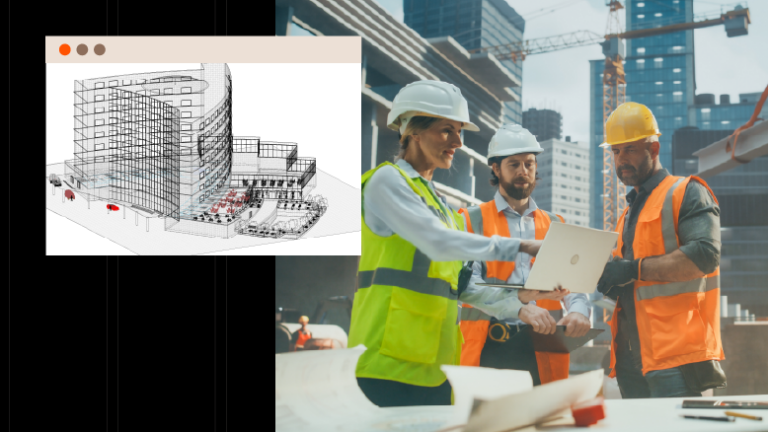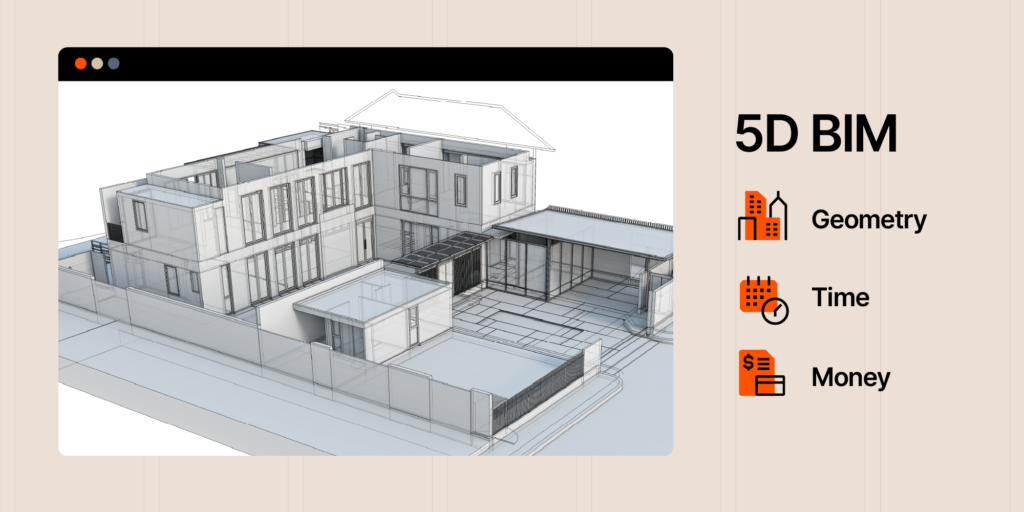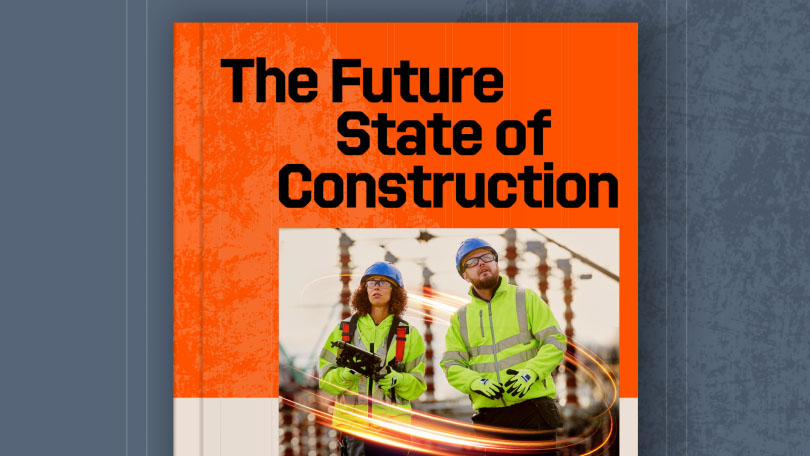— 5 min read
5D BIM Cost Estimation


Last Updated Sep 15, 2025

DJ Phipps
Senior Principal Strategic Product Consultant
16 articles
DJ Phipps has spent over two decades working in the building and design industry. He's dedicated to using technology to make work easier and more efficient, with a focus on project management and improving systems. DJ now plays a key role at Procore as a Senior Principal Strategic Product Consultant.

Kacie Goff
Contributing Writer
91 articles
Kacie Goff is a construction writer who grew up in a construction family — her dad owned a concrete company. Over the last decade, she’s blended that experience with her writing expertise to create content for the Construction Progress Coalition, Newsweek, CNET, and others. She founded and runs her own agency, Jot Content, from her home in Ventura, California.

Nicholas Dunbar
Content Manager
62 articles
Nick Dunbar oversees the creation and management of UK and Ireland educational content at Procore. Previously, he worked as a sustainability writer at the Building Research Establishment and served as a sustainability consultant within the built environment sector. Nick holds degrees in industrial sustainability and environmental sciences and lives in Camden, London.
Last Updated Sep 15, 2025

As the construction industry continues to adopt building information modelling (BIM), 5D BIM is emerging as a tool for more predictable cost estimation and management. Building on the foundations of 3D BIM, which focuses on the geometric aspects of design, and 4D BIM, which integrates scheduling data (the programme), 5D BIM introduces the dimension of cost.
Since the 2016 UK Government mandate for Level 2 BIM on centrally funded projects, many teams now expect cost data to flow seamlessly from design to delivery. 5D BIM allows project organisations to develop precise cost forecasts that align closely with project requirements - significantly streamlining the estimating process. With this added BIM dimension, teams gain a living “bill of cost” that updates with every model change, supporting better risk management and value engineering.
This article explains how 5D BIM works, including its benefits, best-practice implementation tips, and answers to common questions.
Table of contents
How 5D BIM Works
5D BIM layers cost data (£) onto the 3D geometry and 4D programme by tying that data to individual elements in the BIM model.
In an ideal workflow, existing systems work together to enable this effort. Imagine a model built using the company’s database of parts and pieces. If those components are classified - often with Uniclass - and linked to the firm’s cost catalogue priced in GBP and indexed to BCIS, the team can instantly generate accurate estimates.
Main contractors (MCs) and Quantity Surveyors (QSs) can leverage the now-5D model to automatically generate bills of quantities (BoQs), while trade partners can visualise the cost of a full section of ductwork. Most UK construction professionals won’t share the cost-loaded model externally, protecting proprietary pricing information and competitive advantage.

5D BIM Maturity Levels
Not all 5D BIM is created equal. Some 5D models only include material costs; more mature organisations - often with an internal BIM or digital construction team - add labour data too. The deeper the granularity, the more reliably the model predicts cost.
If a contractor applies historical cost data for materials, the model can generate rough pricing for procurement. Connecting it to a live cost catalogue and overlaying labour rates delivers far greater accuracy. In other words, as contractors get more sophisticated with model development and up-to-date cost data, 5D BIM moves from a rough estimating tool to a detailed, insight-rich platform for pricing construction projects.
4D vs 5D BIM
Some companies mature linearly from 3D models to 4D ones and finally to 5D. Others move straight from 3D to 5D BIM, because the fourth dimension - time - is a distinct category. 4D BIM overlays scheduling data on the model, enabling better sequencing of the programme. 5D BIM builds on that by integrating cost.
Either discipline can exist without the other, but together they provide a more complete picture of time and money.
Benefits of 5D BIM
It’s a notable lift to add the fifth dimension to building information modeling. Still, many companies are putting in this effort, in some cases even hiring dedicated BIM managers to do so. However, there can be a lot of return on investment from this effort.
More Accurate Project Pricing
Automatically attaching costs to individual components means 5D BIM can generate detailed project prices as easily as teams once produced high-level estimates - vital in a market where construction material inflation has averaged 20 % since 2021.
Data-informed Value Engineering
With cost data embedded, design changes immediately show their budget impact. Owners can instantly see how swapping a finish affects both aesthetics and the bottom line, enabling data-driven decisions engineering while protecting design intent.
Better Risk Management
By aligning expected costs with the employer’s budget early, teams mitigate the risk of budget gaps that cause delays and disputes - supporting the Government’s Construction Playbook principles.
More Efficient Take-offs
5D BIM enables automated 3D BoQ take-offs, saving programme time and reducing human error compared with manual measurements.
Change Management Support
When a change occurs, a cost-loaded model produces precise pricing for additional time and materials. With everyone seeing the same data, decisions happen faster and fee erosion is reduced.
Real-world Success
Mace reports saving £2 million in prelims on a Midlands hospital by running fortnightly 5D model reviews that aligned design, cost, and programme.
Best Practices for 5D BIM
- Build a trusted cost catalogue. Maintain up-to-date GBP costs and labour rates indexed to BCIS.
- Validate the model. Whether adapting an architect’s model or authoring in-house, ensure constructability before cost-loading.
- Classify consistently. Use a recognised UK system such as Uniclass so cost items map cleanly to model elements.
- Engage the QS early. Quantity Surveyors can test ‘what-if’ scenarios and keep budgets on track throughout RIBA Plan of Work stages.
- Update continuously. Keep the 5D model live; compare initial projections to actuals to refine future estimates.
FAQ
What is meant by 5D BIM?
5D Building Information Modelling links cost (£) to the 3D model and 4D programme, creating a dynamic financial view of the project.
What are 3D, 4D, 5D, 6D, and 7D in BIM?
- 3D: Geometry
- 4D: Time / Programme
- 5D: Cost
- 6D: Sustainability / Energy
- 7D: Operation & Maintenance / Asset Information
At which RIBA stage does 5D BIM intensify?
Cost-loading typically increases from RIBA Stage 4 (Technical Design) onward, when specifications and quantities stabilise.
By removing manual spreadsheets and embedding cost intelligence in the model, 5D BIM frees commercial teams to focus on value-adding activities - one reason contractors report higher staff retention and healthier project cultures.
Categories:
Written by

DJ Phipps
Senior Principal Strategic Product Consultant | Procore Technologies
16 articles
DJ Phipps has spent over two decades working in the building and design industry. He's dedicated to using technology to make work easier and more efficient, with a focus on project management and improving systems. DJ now plays a key role at Procore as a Senior Principal Strategic Product Consultant.
View profile
Kacie Goff
Contributing Writer | Procore Technologies
91 articles
Kacie Goff is a construction writer who grew up in a construction family — her dad owned a concrete company. Over the last decade, she’s blended that experience with her writing expertise to create content for the Construction Progress Coalition, Newsweek, CNET, and others. She founded and runs her own agency, Jot Content, from her home in Ventura, California.
View profileReviewed by

Nicholas Dunbar
Content Manager | Procore
62 articles
Nick Dunbar oversees the creation and management of UK and Ireland educational content at Procore. Previously, he worked as a sustainability writer at the Building Research Establishment and served as a sustainability consultant within the built environment sector. Nick holds degrees in industrial sustainability and environmental sciences and lives in Camden, London.
View profileExplore more helpful resources

Construction Management Contracts: A Complete UK Guide
Managing construction contracts can lead to an extensive physical paper trail. Sharing contracts, getting signatures and managing timelines is difficult when teams and clients are scattered across job sites and...

Key Differences Between Contractors & Subcontractors
In UK commercial construction, main (or principal) contractors engage directly with project owners to deliver complete construction programmes, while subcontractors perform specific scopes of work under the main contractor’s management....

The Role of RFPs in UK Construction Projects
Requests for Proposals (RFPs) are a core document for construction procurement in the United Kingdom. Effective RFPs align expectations, establish clear evaluation criteria, and create accountability between clients and contractors....

Financial Management in Construction Projects
Effective financial management can make or break construction projects. Teams that master budgeting, cash flow and cost control are better positioned to deliver projects on time, within budget and with...
